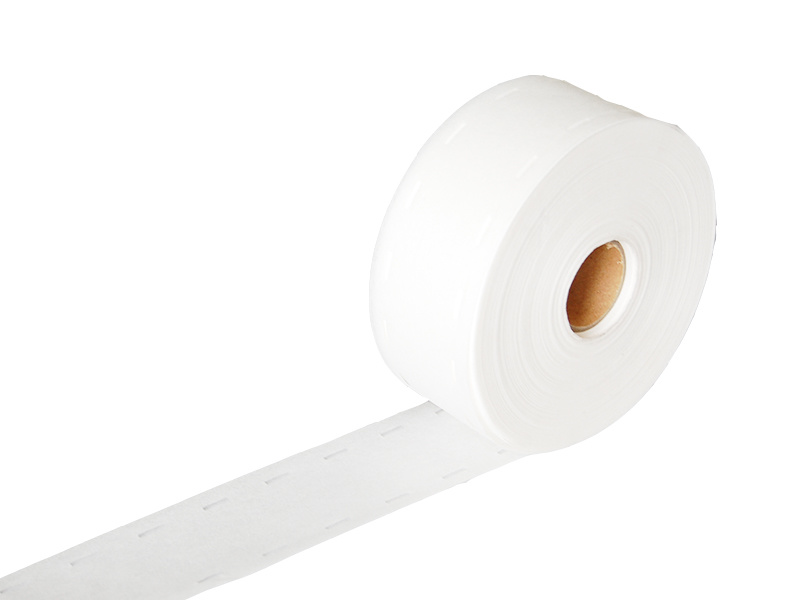Understanding Soft Handfeel Fusible Interlining: A Key Element in Textile Applications
Release time:
2025-06-20
In the textile industry, particularly in the realm of fusible interlinings, the term “soft handfeel fusible interlining” refers to a specialized material that significantly enhances the feel and drape of garments. This type of interlining is designed to be applied to fabrics through heat and pressure, creating a bond that adds structure without compromising flexibility. Understanding its properties and applications can greatly benefit manufacturers and designers aiming to improve the quality of their products.
Soft handfeel fusible interlining is typically made from a blend of synthetic fibers, providing a lightweight yet strong support that can be integrated into various fabrics. The primary characteristic of this interlining is its soft texture, which allows the outer fabric to maintain a natural drape and feel. Unlike traditional interlinings that can be stiff and rigid, soft handfeel options ensure that garments remain comfortable while still retaining their shape and structure.
One of the primary advantages of using soft handfeel fusible interlining is its versatility. It can be employed in a range of applications, including collars, cuffs, and waistbands, as well as in more complex designs such as tailored jackets and dresses. This adaptability makes it an essential component for fashion designers and manufacturers looking to create high-quality garments that appeal to consumers seeking both style and comfort.
Another benefit of soft handfeel fusible interlining is its ability to enhance the overall performance of garments. When used correctly, it can improve the garment's longevity by providing additional support and preventing distortion during wear and washing. Furthermore, the fusible nature of this interlining allows for quick and efficient application, reducing production time and enhancing workflow efficiency.
In addition to its practical advantages, the use of soft handfeel fusible interlining can also contribute to the aesthetic appeal of a garment. By allowing fabrics to maintain their drape and softness, it enables designers to create more sophisticated silhouettes and styles that resonate with modern fashion trends. This capability to blend functionality with style is vital in today's competitive textile market.
In conclusion, soft handfeel fusible interlining plays a crucial role in the textile industry, particularly in garment production. Its unique combination of softness, versatility, and performance-enhancing properties makes it an invaluable resource for professionals seeking to elevate their products. By understanding and effectively integrating this material, manufacturers can achieve a balance between quality, comfort, and style, ultimately leading to increased customer satisfaction and brand loyalty.
Soft handfeel fusible interlining is typically made from a blend of synthetic fibers, providing a lightweight yet strong support that can be integrated into various fabrics. The primary characteristic of this interlining is its soft texture, which allows the outer fabric to maintain a natural drape and feel. Unlike traditional interlinings that can be stiff and rigid, soft handfeel options ensure that garments remain comfortable while still retaining their shape and structure.
One of the primary advantages of using soft handfeel fusible interlining is its versatility. It can be employed in a range of applications, including collars, cuffs, and waistbands, as well as in more complex designs such as tailored jackets and dresses. This adaptability makes it an essential component for fashion designers and manufacturers looking to create high-quality garments that appeal to consumers seeking both style and comfort.
Another benefit of soft handfeel fusible interlining is its ability to enhance the overall performance of garments. When used correctly, it can improve the garment's longevity by providing additional support and preventing distortion during wear and washing. Furthermore, the fusible nature of this interlining allows for quick and efficient application, reducing production time and enhancing workflow efficiency.
In addition to its practical advantages, the use of soft handfeel fusible interlining can also contribute to the aesthetic appeal of a garment. By allowing fabrics to maintain their drape and softness, it enables designers to create more sophisticated silhouettes and styles that resonate with modern fashion trends. This capability to blend functionality with style is vital in today's competitive textile market.
In conclusion, soft handfeel fusible interlining plays a crucial role in the textile industry, particularly in garment production. Its unique combination of softness, versatility, and performance-enhancing properties makes it an invaluable resource for professionals seeking to elevate their products. By understanding and effectively integrating this material, manufacturers can achieve a balance between quality, comfort, and style, ultimately leading to increased customer satisfaction and brand loyalty.
Soft Handfeel Fusible Interlining
Previous Page
Previous Page
Latest News
Nantong Rainbow Technology Co., Ltd.
Telephone:+86-13587673537
E-mail:chrislc717@163.com
Address: Group 42, Xizansi Village, Xiting Town, Tongzhou District, Nantong City, Jiangsu Province

Copyright©2024 Nantong Rainbow Technology Co., Ltd. | Powered by www.300.cn
Copyright©2024 Nantong Rainbow Technology Co., Ltd.
Powered by www.300.cn




